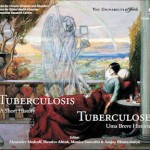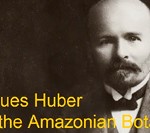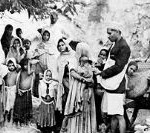
Manguinhos Historical Architectural Site: The buildings built to house the recently created Federal Serum Therapy Institute at the beginning of the 20th century, which gave rise to Fiocruz, are examples of eclectic architecture. Photo: Casa de Oswaldo Cruz Collection.
The article Social participation and territory: possible dialogues for the sustainable management of cultural heritage analyses the meaning of social participation in the recognition, appropriation, preservation, and enhancement of cultural heritage. This work is part of the recently published dossier of HCS-Manguinhos about the relationship between territory, memory, and heritage on the Oswaldo Cruz Foundation’s headquarters campus and its surroundings.
Marcos José de Araújo Pinheiro, director of Casa de Oswaldo Cruz and professor of the Graduate Program in the Preservation and Management of Cultural Heritage of Science and Health (Casa de Oswaldo Cruz/Fiocruz), and the architect Roberta dos Santos de Almeida (Casa de Oswaldo Cruz) focuses on the Manguinhos Historical Architectural Site at Fundação Oswaldo Cruz and its Requalification Plan, which aims to transform Fiocruz, headquarters in Manguinhos, Rio de Janeiro it into a “park campus.”
A diagnostic study was conducted of social participation in this heritage, which found that greater participation should be encouraged if the complex is to be consolidated as science and health heritage and also appropriated by the territory as an asset of symbolic, cognitive, and identity values and a structuring element for sustainable development.
The Manguinhos Historical Architectural Site
On the Fiocruz headquarters campus in Manguinhos, in Rio de Janeiro, there is a group of buildings erected between 1904 and 1922, which constitute the historical architectural core of the institution’s origins, at the time called the Federal Serum Therapy Institute of Manguinhos. These buildings formed a production and research complex that made serums and vaccines to combat the epidemics of the time. The Fiocruz’s Requalification Plan includes restoring, preserving, and opening this heritage of historical and architectural value to society. The proposal is to transform the institution’s campus into a science and technology park, expanding the Fiocruz Museum of Life visitation circuit with more restored century-old buildings, exhibitions, open spaces, and cultural activities. Among the objectives of the requalification are the conservation and valorization of this architectural heritage, the sharing of knowledge produced by the institution, the integration of the Manguinhos region into the cultural map of the city of Rio de Janeiro, and the expansion of the offer of exhibitions in the areas of science, technology, and health.
Check out the entire dossier: Volume: 30 Supplement 2, Published: 2023
Related articles in HCS-Manguinhos:
Heritage, territory and memory at Fiocruz headquarters The relationship between territory, memory, and heritage on the Oswaldo Cruz Foundation’s headquarters campus and its surroundings is analyzed in the second supplement of volume 30 of HCSM.
Silva, Matheus Alves Duarte da. From Bombay to Rio de Janeiro: the circulation of knowledge and the establishment of the Manguinhos laboratory, 1894-1902. Hist. cienc. saude-Manguinhos, Set 2018, vol.25, no.3, p.639-657. ISSN 0104-5970







